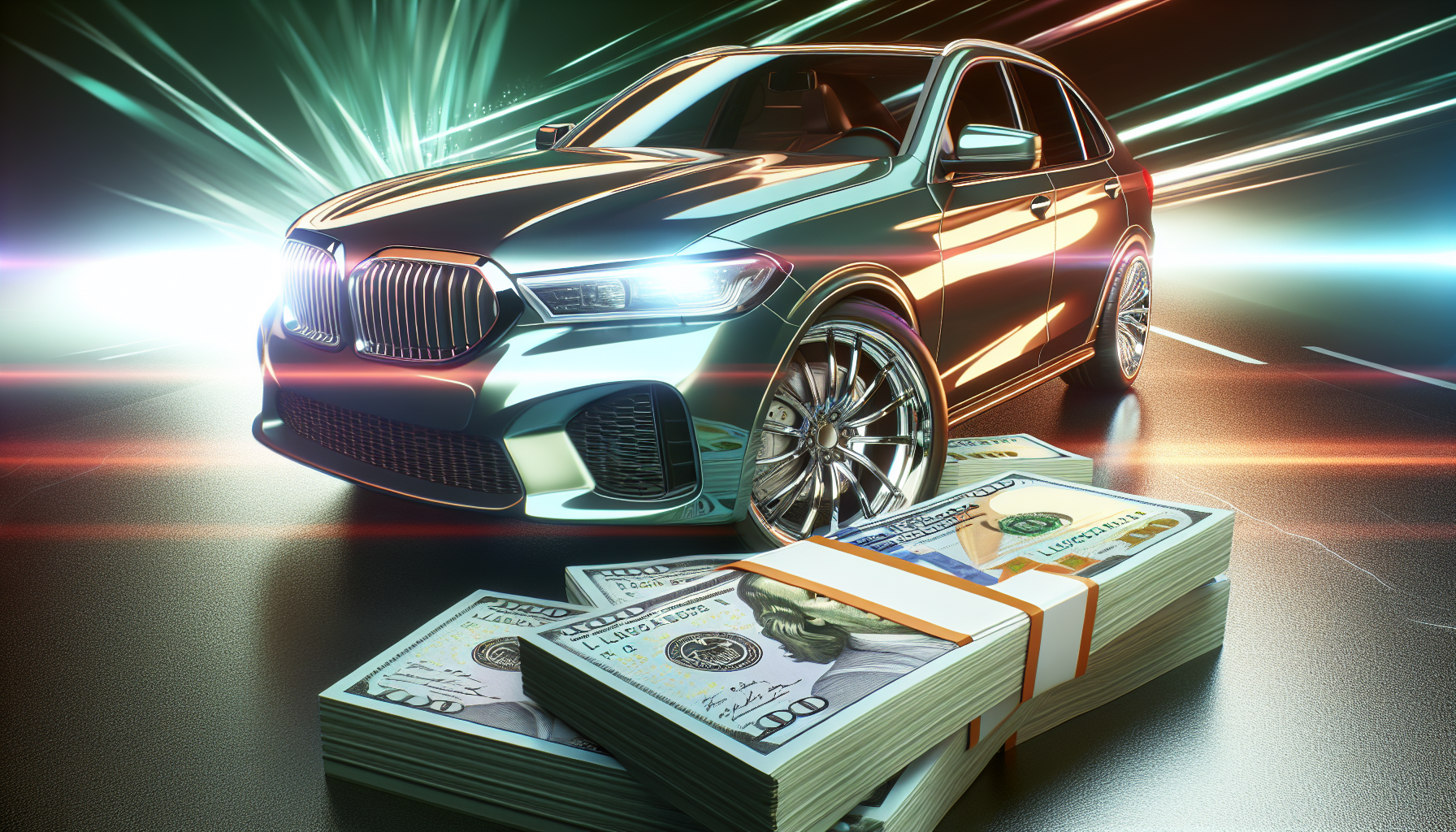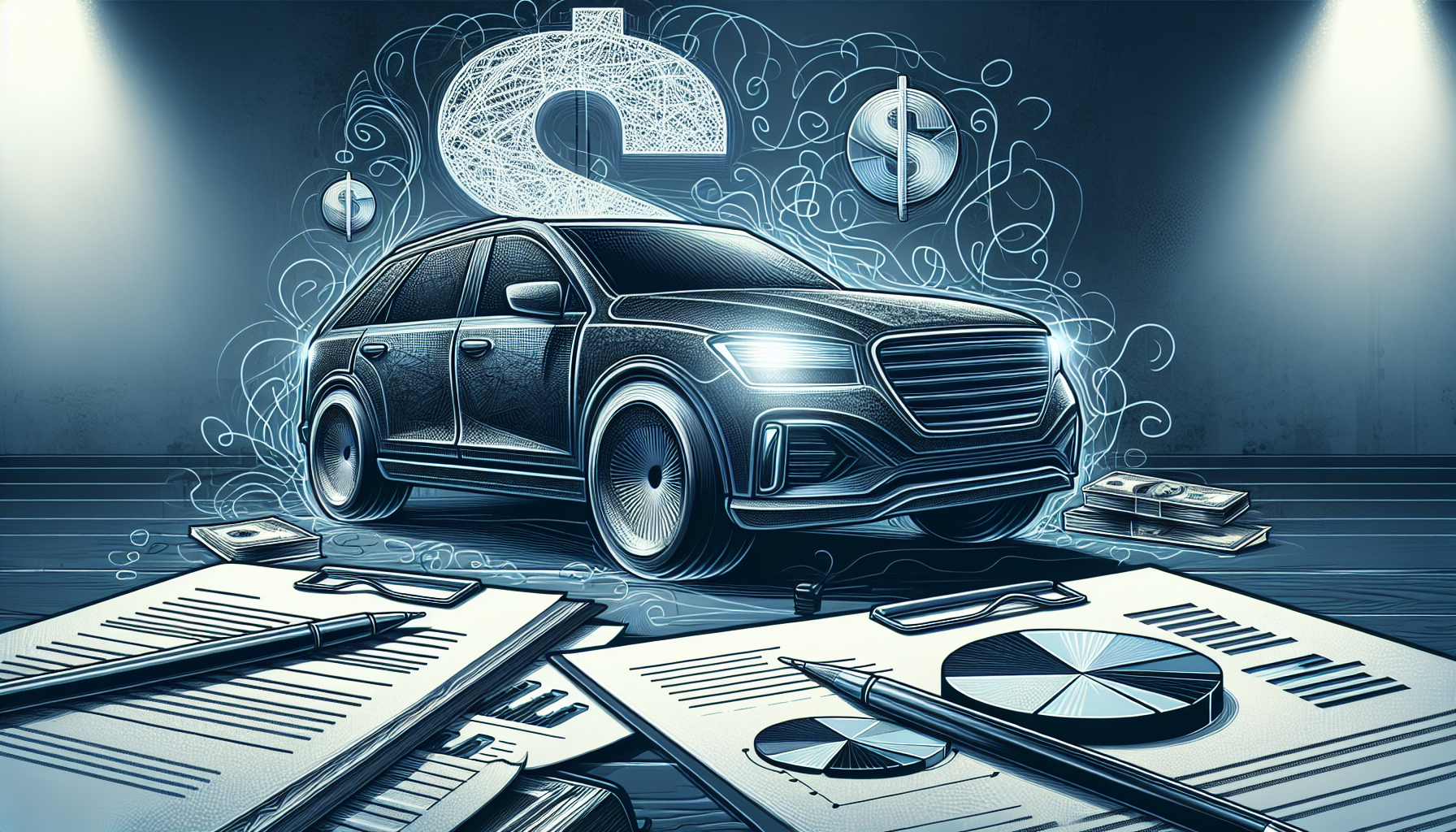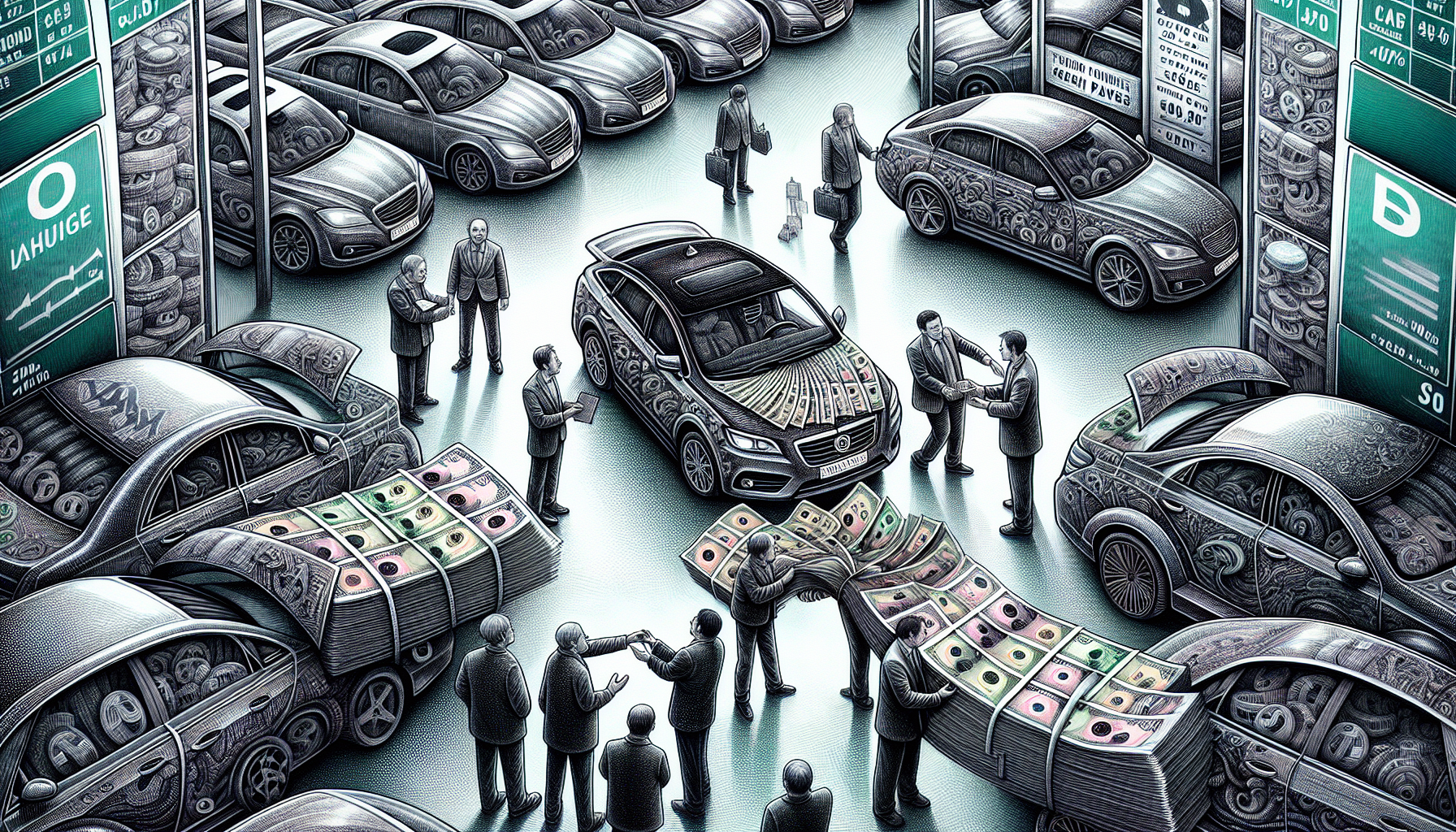Are you wondering what percentage of new cars are paid for in cash in today’s market? Recent data shows that approximately 29% of new car buyers opt for this payment method, indicating a notable shift from traditional financing options. In this article, we delve into the factors driving this trend and explore how the landscape of auto purchasing is evolving.
Key Takeaways
- A significant 29% of new car buyers now pay in cash, counteracting the trend of rising auto loan payments which has led 85% to finance their purchases.
- While more consumers, especially millennials and Gen Z, prefer to avoid financing to minimize long-term debt, auto loans remain dominant with increasing loan terms and monthly payments.
- Cash payments for new cars are influenced by the economic climate, high interest rates, and a shift in consumer preferences towards financial flexibility and aversion to debt.
Cash vs. Financing: How New Car Buyers Are Paying for Their Vehicles
In the United States, 85% of new car purchases are financed, a noticeable increase from 75% in 2009. Yet, a surprising 29% of new car buyers are now choosing to pay in cash, marking a significant shift in payment preference. What could be behind this surprising trend?
The answer lies in a pushback against high monthly payments for auto loans. As auto financing continues to result in increasingly higher monthly payments, more and more consumers are willing to fork over a significant amount of cash upfront to avoid the long-term debt.
Cash Purchases on the Rise

The surge in cash purchases for new cars is more than a blip on the radar. A recent survey indicates that over 25% of new car buyers are now completing their purchases with cash, highlighting a substantial shift in buyer behavior. So what’s driving this increase in cash purchases?
Several factors are at play here:
- Current economic conditions, marked by low savings rates, seem to be nudging consumers towards buying cars with cash.
- There’s a growing aversion to debt among millennials leading to more cash payments.
- The appeal of avoiding long-term commitments and higher overall costs associated with auto financing seems to be winning over more consumers.
Financing Options Still Dominate

Despite the rise in cash purchases, financing options still hold a significant share of the market. By the third quarter of 2018, the total number of open auto loan accounts, including car loans, in the U.S. had surged to 113 million, marking a 39% rise since early 2010. Furthermore, financing terms have been stretching, with the share of auto loans lasting six or more years rising to over 42% in early 2017, up from 26% in 2009.
The average monthly payments for auto loans have also escalated, with new vehicles seeing an average of $729 and used ones $528 per month in Q2 of 2023. In fact, payments of $1,000 or more per month are becoming increasingly common among consumers financing new vehicles. It’s clear that while cash purchases are on the rise, auto financing continues to dominate the car market.
Factors Influencing the Shift to Cash Payments
With the trend towards cash payments for new cars, it’s worth exploring the factors that are influencing this shift. What’s causing more consumers to bypass financing and opt for outright ownership instead? A closer look reveals several underlying influences, from economic conditions to interest rates and even consumer preferences,.
Economic Conditions

The current economic climate is a significant factor influencing car buyers’ decisions. Inflation, for instance, has affected the purchasing power of many consumers, making it more challenging to afford higher vehicle prices. Yet, despite these challenges, consumers continue to spend on vehicles, with a 9% increase in spending since the end of 2019. This resilience in the face of economic challenges hints at the importance many consumers place on vehicle ownership.
Interest Rates
Interest rates play a crucial role in the decision-making process of car buyers. The Federal Reserve sets a benchmark interest rate that influences the rates private lenders set for auto loans. When the Federal Reserve raises its target rate, auto loan rates typically increase, making financing more expensive for consumers.
Recent rate hikes by the Federal Reserve to control inflation have led to persistently high interest rates. This, combined with more stringent credit requirements, has contributed to an increase in cash payments for new car purchases.
Consumer Preferences
Finally, consumer preferences are playing a role in the shift towards cash transactions for new cars. More and more consumers, particularly Gen Z shoppers, are opting to use cash due to:
- conservative spending habits shaped by recent economic events
- a cautious approach to spending
- an aversion to financing
- a desire for financial flexibility and minimized debt
Demographics and Cash Payments: Who’s Paying in Cash?
When looking at who’s leading the charge in cash payments for new cars, one group stands out: Generation Z. Recent surveys show that Gen Z consumers are making a noticeable contribution to the trend of cash payments for new cars,. But age is just one piece of the puzzle. Income levels and geographic trends also come into play, painting a complex picture of cash payment patterns for new car purchases.
Age Groups
Approximately 38% of Americans have purchased their most recent car in cash, with Gen Z leading the cash payment trend for vehicle purchases. Gen Z’s preference for cash purchases is significantly higher compared to other generations. These younger buyers are less likely to finance car purchases due to a cautious approach to credit card use and debt, often seeking more affordable vehicles.
Despite facing economic challenges, Gen Z makes up a significant portion of new car buyers paying in cash, often with financial assistance from their Gen X parents. The average value of vehicles that Gen Z are interested in is approximately $19,800, which aligns with their tendency to make cash purchases.
Income Levels
Income levels also play a role in the choice of payment method for new cars. For instance, buyers with nonprime credit scores, often associated with lower income levels, experience the highest average monthly payments for new vehicles. This suggests that those with lower incomes may find it more difficult to afford financing and thus may be more likely to opt for cash payments.
Geographic Trends
Geography also plays a role in payment preferences for new cars. Cash payments for new cars are predominantly higher in the Middle East and Asia compared to other regions. Within the United States, there is a notable trend of higher cash payments for new cars in the Western and Southern regions. Meanwhile, cash purchases are more common in mature car markets like Germany and less common in emerging markets in Europe.
These geographic trends highlight the complex interplay of cultural practices and varying levels of banking and credit services availability in shaping payment preferences for new cars.
Benefits and Drawbacks of Cash Payments for New Cars
Buying a car with cash offers several advantages, from avoiding interest to possessing more negotiating power at the dealership. However, it’s not all smooth sailing. Cash payments also carry several disadvantages, including opportunity costs and potential liquidity issues.
Advantages of Cash Payments
One of the most significant advantages of cash payments is the ability to avoid interest charges and loan fees. This means the money that would have gone towards interest can be allocated to other areas, allowing you to save more money. Moreover, cash buyers gain immediate full ownership of their vehicle, which translates to having a tangible asset for potential future use in financial dealings.
Managing personal finances also becomes simpler without the burden of monthly car payments. Lastly, cash buyers may negotiate for dealer discounts, as the absence of loan processing simplifies the transaction for dealers.
Disadvantages of Cash Payments
Despite its advantages, paying for a car in cash does have its drawbacks. For one, buyers miss the chance to improve their credit score through consistent loan repayments. Cash buyers also often don’t qualify for various dealership incentives, including rebates that are generally offered only to those who opt for financing.
Moreover, paying with cash may restrict buyers to only vehicles that fall within their immediate budget constraints, potentially making more expensive models unattainable.
Tips for Car Buyers Considering Cash Payments
For those considering cash payments for their new car, it’s important to approach the process strategically. From assessing financial priorities to negotiating with dealerships and planning for future expenses, there are several factors to consider to ensure a smooth transaction.
Assessing Financial Priorities
Before deciding to pay for a car in cash, it’s crucial to evaluate your broader financial situation. This includes having an emergency fund, managing debts, and investment strategies. Aligning a car purchase with overall financial goals helps ensure that you stay within your financial means and prevents potential strain from monthly payments.
Remember, while the immediate benefits of paying in cash might be appealing, it’s crucial to consider how it fits with long-term financial aspirations and stability.
Negotiating with Dealerships
Paying in cash can provide leverage in negotiations, possibly leading to better deals or discounts. Here are some tips to keep in mind:
- Reveal your cash payment after settling on a final price to potentially get a better deal.
- Be ready to walk away if the deal isn’t right.
- Avoid disclosing the maximum affordable monthly payment during negotiations.
Prioritize discussing the car’s price, as dealers can manipulate other terms to fit a monthly payment, possibly leading to a less favorable deal overall.
Planning for Future Expenses
Remember, buying a car is just the beginning. After the purchase, you need to account for ongoing expenses, including maintenance, repairs, and car insurance. Purchasing a vehicle with cash could lead to a lower reserve of cash for emergencies, affecting your financial flexibility.
Young car buyers, in particular, are generally discouraged from paying in cash for a new vehicle or a used car due to the ensuing financial strain from comprehensive ownership costs.
Summary
In conclusion, the shift towards cash payments for new cars is a complex phenomenon, with multiple factors at play. From economic conditions and interest rates to consumer preferences and demographic trends, the landscape of auto purchases is rapidly evolving. While financing options still dominate, the rise in cash payments cannot be ignored. Whether you choose to finance or pay cash for your next car, understanding these trends can help you make a more informed decision.
Frequently Asked Questions
What percentage of people pay cash for a new car?
In a recent study, 29% of people of all ages reported paying cash for a new car, which was higher than expected.
Are more people buying cars with cash?
Yes, over 25% of car buyers are choosing to pay with cash, indicating a growing trend towards cash payments for new cars.
Why are cash purchases for new cars on the rise?
The rise in cash purchases for new cars can be attributed to factors like economic conditions, interest rates, and consumer preferences. These elements are influencing the shift towards cash payments.
Who is more likely to buy cars with cash?
Generation Z is more likely to buy cars with cash. This trend is led by the younger generation.
What are the advantages of buying a car with cash?
Buying a car with cash eliminates interest charges, provides immediate full ownership, simplifies personal finances, and can offer more negotiating power at the dealership. These advantages make it a smart choice for many people.
For more information, visit https://www.carmula.com/





 Who We Are
Who We Are Coverage Area
Coverage Area Donate
Donate